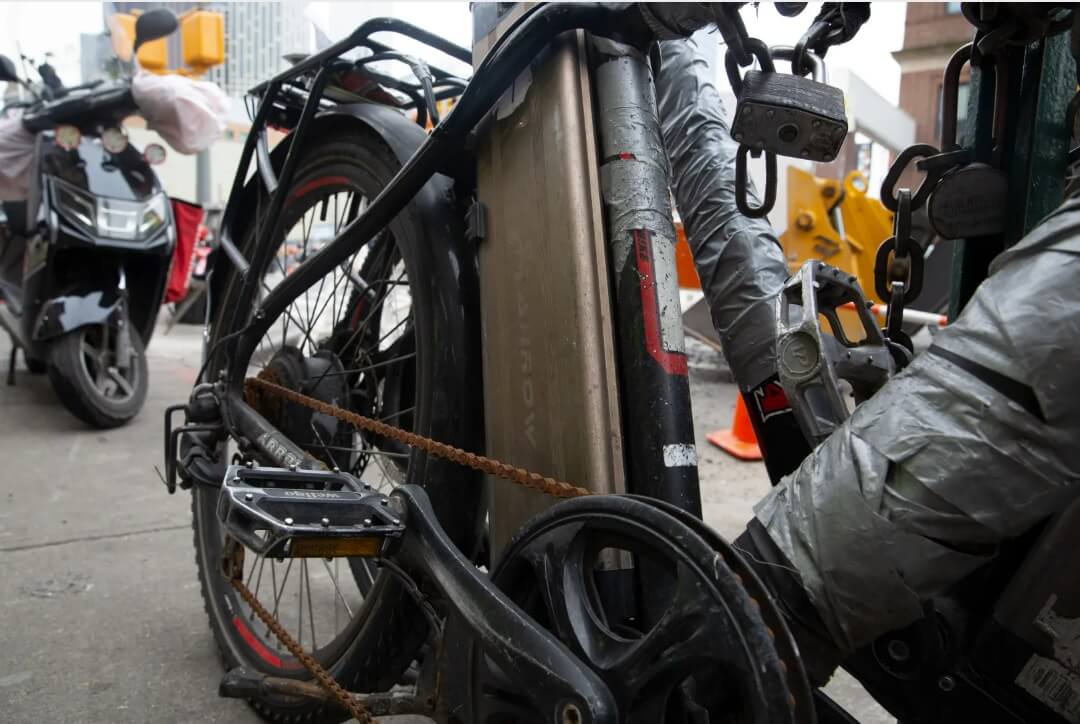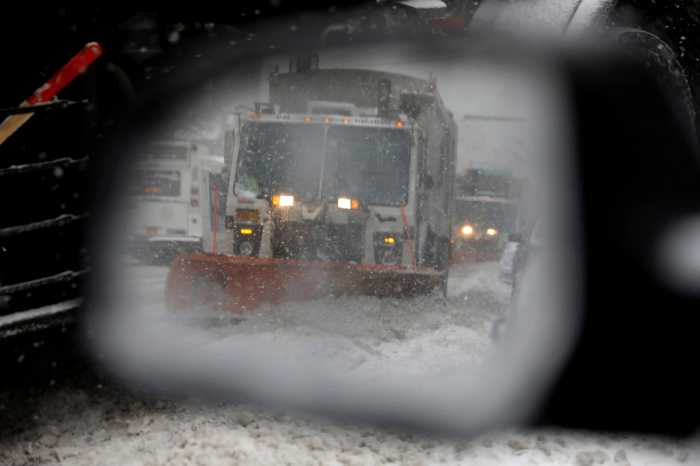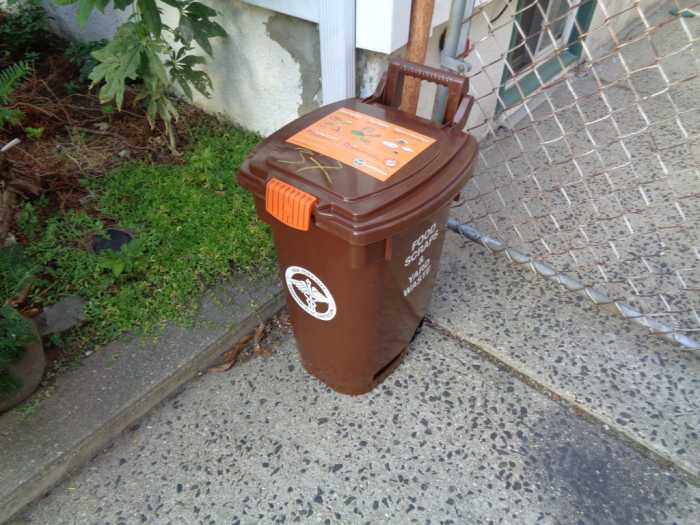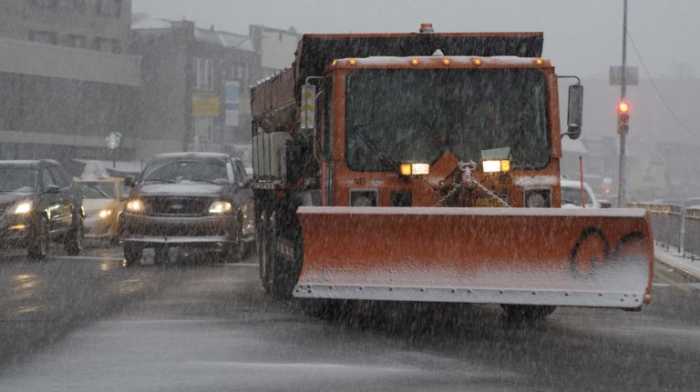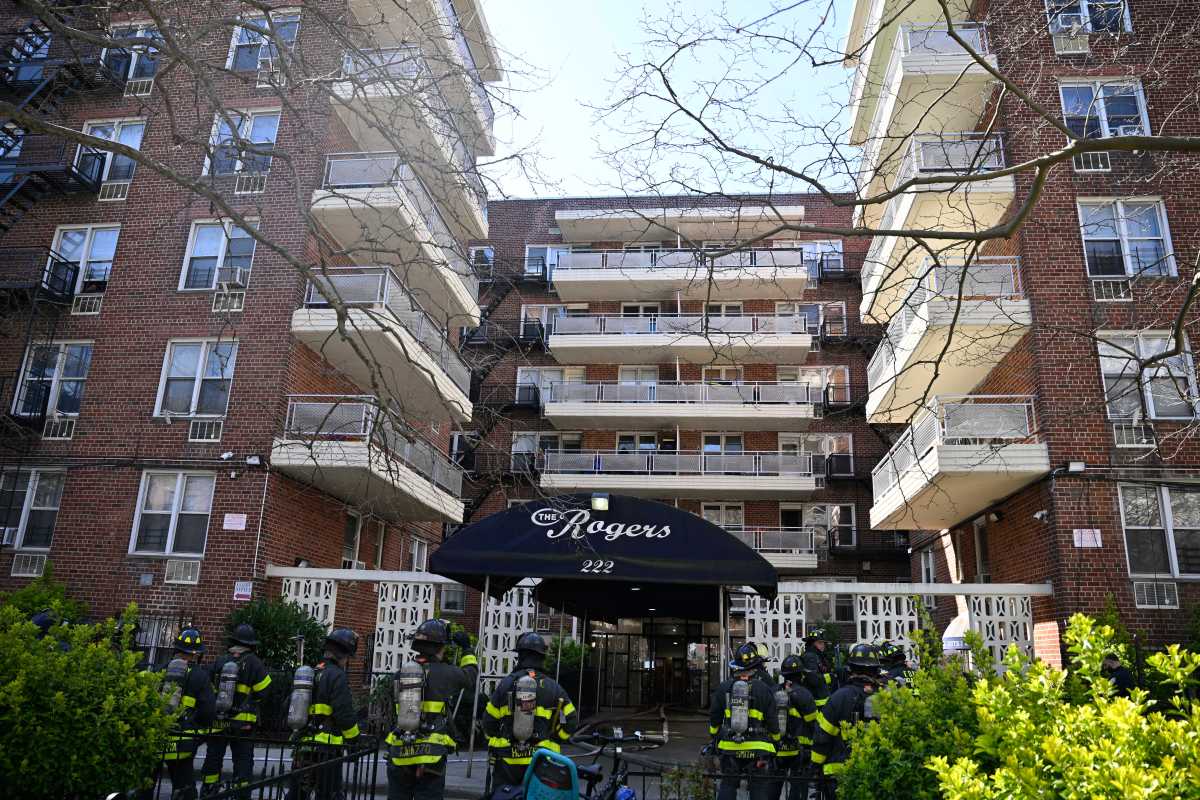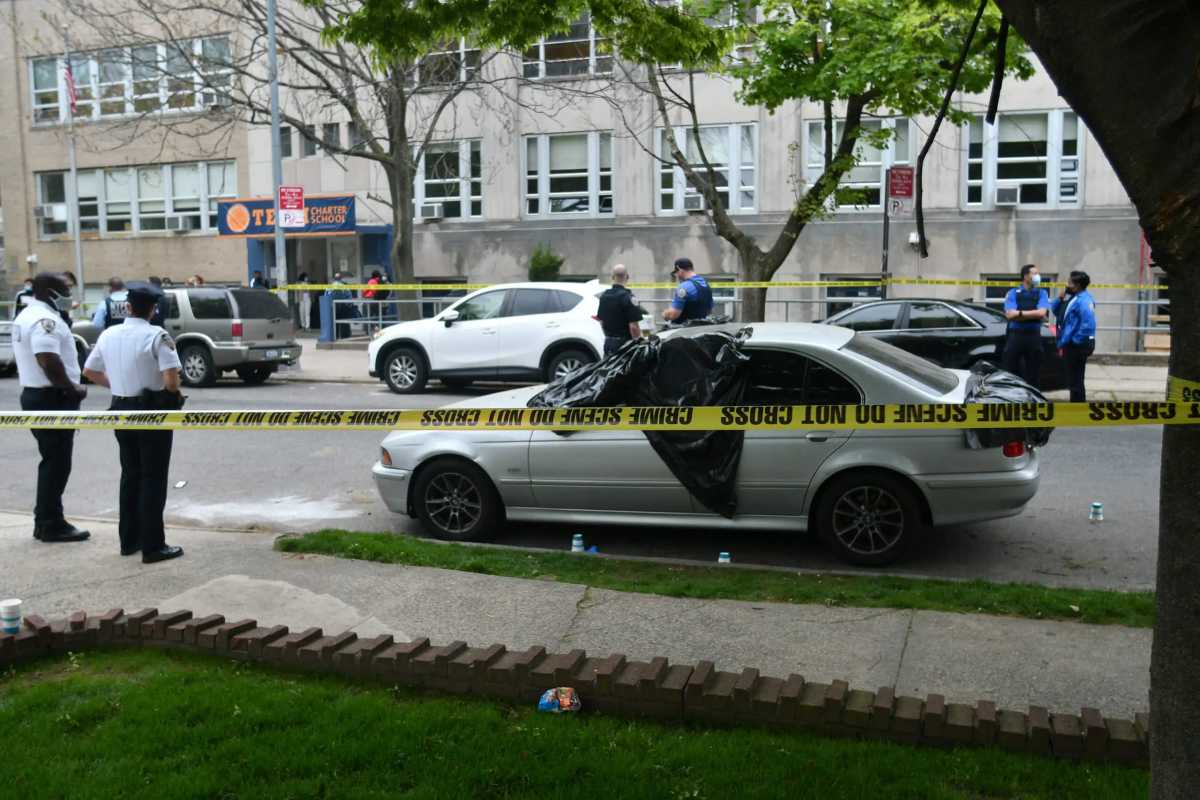This article was Samantha Maldonado, The City originally published on by THE CITY
Lithium-ion batteries caused so many fires last year that the Sanitation Department ran out of room to store the hazardous residue, THE CITY has learned.
Through most of last year, city workers packed lithium-ion batteries removed from fires into 159 containers at a DSNY storage facility in Gravesend, Brooklyn. But with a record 219 fires caused by lithium-ion batteries found in e-bikes and other devices, the facility reached capacity, according to a recent issue of the City Record, which said the Gravesend site “is not suitable for the storage of this hazardous material.”
Under an emergency procurement order, a company called Action Trucking removed the batteries at the Gravesend facility between November 30 and December 2, according to the Department of Environmental Protection (DEP). Action Trucking did not respond to requests for comment.
Federal guidelines impose clear procedures for transporting hazardous materials like batteries, which are stricter if the batteries are damaged. They must be individually boxed in a container with fire-suppressant materials.
“With additional damaged, defective or recalled lithium-ion batteries coming in every week, the Department of Environmental Protection — the agency responsible for disposal of this material — issued this emergency procurement to have these batteries removed and protect the safety of all New Yorkers,” said DSNY spokesperson Vincent Gragnani.
Previously, Gragnani said, DSNY had contracted with a vendor to remove the batteries but that vendor was not able to do the work at the end of last year because necessary equipment wasn’t available due to supply chain constraints.
Under a new protocol, DEP will now dispose of abandoned or fire-damaged lithium-ion batteries. In the event FDNY wants to save them for evidence, DSNY will store them.
FDNY Calls for Federal Regulation
Over the past two years, the number of fires caused by lithium-ion batteries has more than quadrupled and batteries powering e-bikes and e-scooters have caused the vast majority of those incidents, according to FDNY.
Aside from e-bikes, lithium-ion batteries are also found in everyday electronics like cell phones, laptops, toys and vacuums — even greeting cards. It’s illegal to throw such batteries into the garbage or recycling, and doing so has resulted in fires at sanitation facilities, including waste transfer stations, recycling centers and in trucks.
Fire Commissioner Laura Kavanagh last Friday wrote to the federal Consumer Product Safety Commission, asking it to regulate lithium-ion batteries, including stopping uncertified batteries from entering the country and calling on manufacturers to make sure e-mobility devices only work with approved batteries.
Lithium-ion batteries in e-bikes, scooters and other devices caused 219 fires, with 147 injuries and six deaths, Kavanagh said in her letter. A recent fire caused by lithium-ion batteries in Bushwick that critically injured a woman was the city’s 24th this year.
“The number of different battery sizes and types which are in the market needs to be regulated,” said Nikhil Gupta, a professor at NYU-Tandon School of Engineering. “Everybody is using a different type of battery, [and] there is so little interchangeability in these batteries.”
Recycle the Right Way
When lithium-ion batteries catch fire, they emit toxic smoke and even after the fire has been extinguished, damaged batteries can reignite.
“You’re storing energy within these chemical bonds and chemical reactions, and so until all of those reactions have happened, there’s still energy and potential for energy to be released. If there’s a short circuit somewhere, you can end up with a fire,” said Rebecca Ciez, assistant professor of mechanical engineering at Purdue University.
Ciez stressed the importance of recycling such batteries. “As you get to bigger and bigger battery packs, it becomes more important to try and recycle those because there is more energy stored,” she said.
Under a 2010 state law, it’s illegal to toss batteries into the trash or general recycling, and manufacturers must finance the specific collection and recycling of batteries. DSNY periodically hosts events to collect electronics, among other hazardous materials, and facilitates regular drop-off hours around the boroughs. The Call2Recycle also has drop-off locations throughout the city.
“The biggest concern in the waste industry is that people toss the batteries in the garbage, and then the batteries will essentially touch each other and create a thermal event,” Leo Raudys, CEO of Call2Recycle, said. “The reason we try to get people to recycle batteries and take them to the approved collection sites is just to prevent that, to keep them out of the regular waste stream.
Recycled properly, materials like cobalt and nickel can be recovered from lithium-ion batteries, which lessens their environmental impact — and that’s true for burned batteries as well. “All of the metals and materials that recyclers want to recover are still available for recovery in a fire damaged battery,” said Raudys.
Still, it’s up to individuals to recognize when an object contains a battery and to dispose of it properly — which doesn’t always happen.
“A lot of these batteries are so small that it’s really easy to lose them in the supply chains, like watch batteries,” Gupta said. “I don’t know how people will see recycling of them to be very important because nobody’s going to go to Home Depot just to drop off batteries coming out of a watch or something so small.”
Single-use alkaline batteries can be trashed, as they don’t contain mercury. To be extra cautious, Ciez suggested putting tape on the ends of these batteries to prevent short circuits from developing.
THE CITY is an independent, nonprofit news outlet dedicated to hard-hitting reporting that serves the people of New York.



